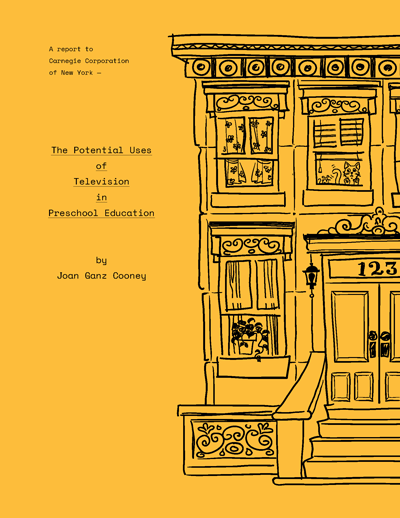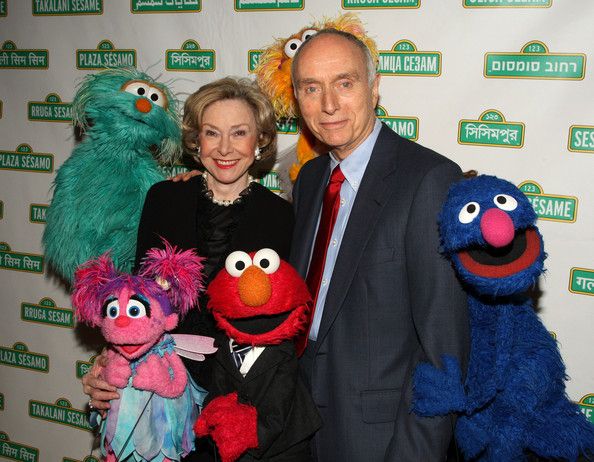
Sesame Street:
A...B...C, C is for Communication
Sesame Street's Vision
The Report That Started It All

Before the world knew her name, Joan Ganz Cooney was determined to make education a fair chance for all, she just didn't know how to do it yet. The report she wrote to the Carnegie Corporation of New York proposed the idea of an educational television show aimed at disadvantaged children. Her goal was to close the achievement gap between different socioeconomic children. Many professionals were very optimistic about the opportunity for a television show just for preschool-aged children. Below are some of the main points from her report.
"But, the national need for more and better educated people and the national demand that we give the disadvantaged child a fair chance at the beginning mean that we cannot wait for the final and definitive word from the researchers, or until there are enough teachers and classrooms to accomodate our preschool population" (Cooney 7).
"Anyone who has small television viewers at home can testify to the fascination that commercials hold for children. Parents report that their children learn to recite all sorts of advertising slogans, read product names on the screen (and, more remarkably, elsewhere), and to sing commercial jingles. It is of course open to serious question how valuable the content is that these commercials teach, but they do prove a point: children can and do learn, in a traditional educational sense, from watching television" (Cooney 10).
"In summary, I am suggesting that the series must have maximum freedom to experiment with talent and ideas, if the potential of the medium to educate and stimulate young children is to be fully explored" (Cooney 40).
Behind the Screen...the Creators of Sesame Street

Joan Ganz Cooney and Lloyd Morrisett, both co-founders of Sesame Street, wanting to make a change in early childhood education (Sesame Workshop).
"In February 1966, at a dinner party at Cooney's Gramercy Park apartment, she and Morrisett talked about his work with early education. Morrisett says he asked Cooney, 'Do you think television can be used to teach young children?' And she said, 'I don't know, but I’d like to talk about it'" (History of Things).
"We are dedicated to pursuing the 21st century equivalent of her (Ganz Cooney's) original question, 'How can emerging media help children learn?' We hope that this report will inspire a new generation to harness the power of media to support the learning and development of all children, and to address the issues of opportunity and equity that remain so profound today" (Sesame Workshop).
(Sesame Education)
"With the visionary support of the Carniege Coporation, Ford Foundation, and the Department of Education, Joan Ganz Cooney and her team set out to create a new kind of television show. One that would educate as it entertained."
~ Sesame Education
(Gould)
Why a Television Show for Toddlers?
"There are so many ways to help kids grow smarter, stronger, and kinder, and we’re doing everything we can to meet their needs in more than 150 countries. You’ll find us on screens, in classrooms, in communities—everywhere families can use a trusted hand to help little ones reach their full potential. Our unforgettable characters bring joyful learning into children’s lives—and help Sesame Workshop change the world, one smile at a time. We have always focused on preschool-age children because research shows they have the greatest potential to learn…and because there’s no joy like the joy of a preschooler" (Sesame Street Workshop).